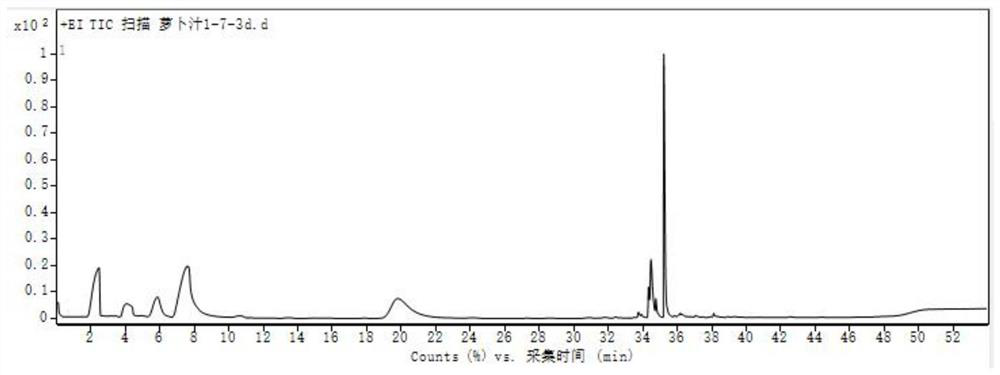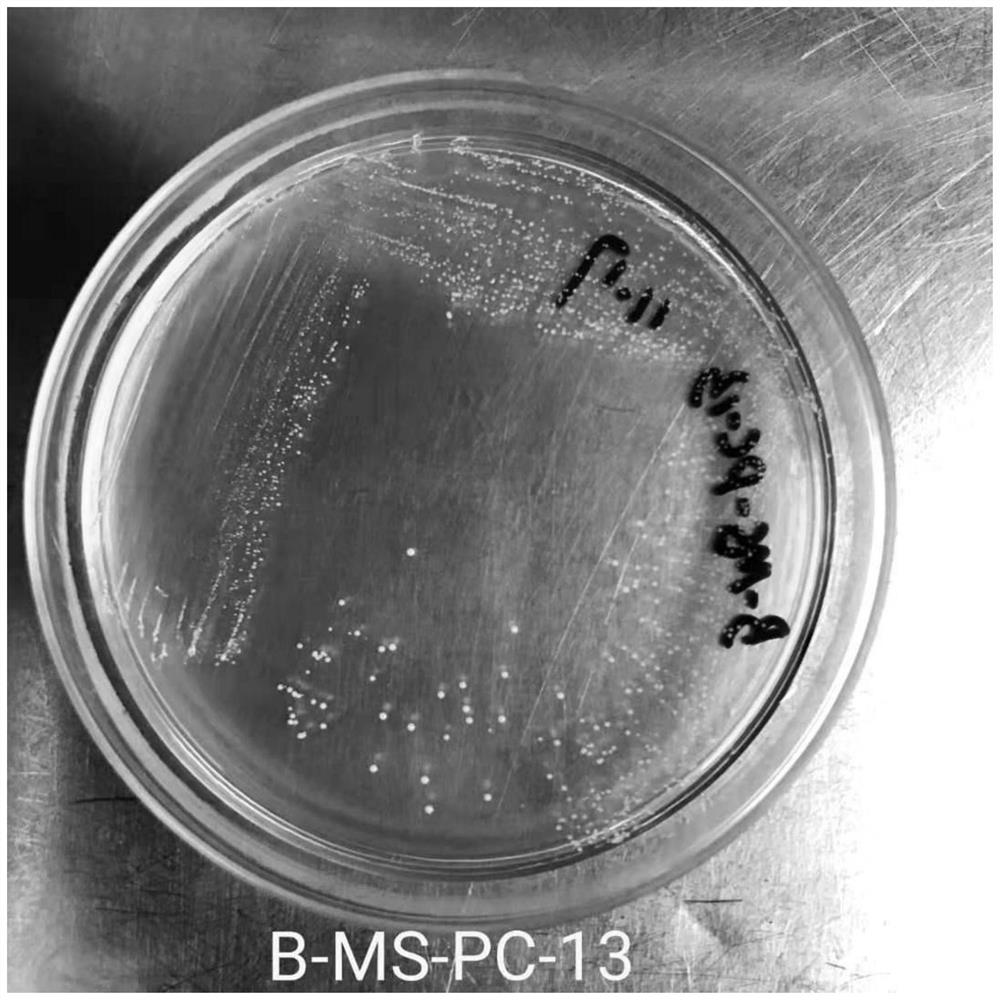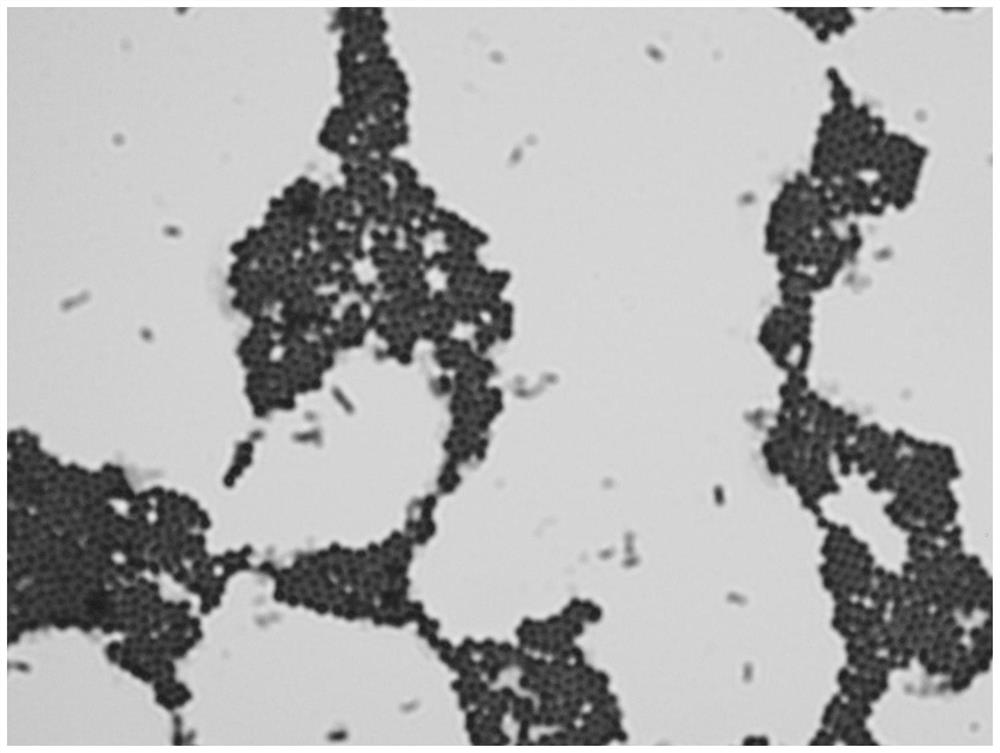Leuconostoc mesenteroides and application thereof
A technology of Leuconostoc membranaceus and bacterial agent, which is applied in the field of microorganisms and can solve the problems of poor product safety, unstable quality, and limitation of large-scale production and application.
- Summary
- Abstract
- Description
- Claims
- Application Information
AI Technical Summary
Problems solved by technology
Method used
Image
Examples
Embodiment 1
[0060] Isolation method of Leuconostoc mesenteroides strain
[0061] 1. Obtain a suitable dilution gradient and culture
[0062] Sampling from traditional kimchi (commercially available) in Meishan City, Sichuan Province, weighed 5g, added to 45mL sterile water, and took 4 dilutions of 10 after gradient dilution. -1 , 10 -2 , 10 -3 , 10 -4 100 μL of each of the bacterial suspensions were spread on the MRS agar medium and incubated at 37°C for 48 hours.
[0063] 2. Separation and purification
[0064] Use the plate streaking method to select typical single colonies, and repeat the culture selection operation to obtain strains with excellent traits.
[0065] 3. Primary screening of strains
[0066] Gram stain and catalase test
[0067] Pick a single colony and do Gram staining and catalase experiments. Gram-positive and hydrogen peroxide-negative bacteria are purified on a plate, centrifuged at 10,000rpm for 5min, and stored in a 30% (v / v) glycerol tube. - Store at 80°C....
Embodiment 2
[0094] Identification of Leuconostoc mesenteroides B-MS-PC-13
[0095] 1. PCR amplification of 16SrDNA
[0096] The Leuconostocmesenteroides (Leuconostocmesenteroides) B-MS-PC-13 single bacterial colony obtained in the preliminary screening process of the bacterial strain in step 3 of Example 1 was planted on the MRS Qiongzhou plate, cultivated at 37°C for 18 to 24 hours, and the grown single Colonies were used as templates for PCR.
[0097] 1) 25 μL of PCR system, including 12.5 μL of Mix, 0.5 μL of 27F, 0.5 μL of 1492R, and 11.5 μL of ddH2O.
[0098] The primers used were 27F: AGAgTT TGA TCC TGG CCT CA and 1492R: gGT TAC CTTgTTACGACTT. The length of the amplified fragment is 1500bp.
[0099] 2) PCR conditions:
[0100] DNA double strands were pre-denatured at 94°C for 10 minutes; denatured at 94°C for 30s; annealed at 50°C for 30s; extended at 72°C for 80s, and cycled 29 times, and finally kept at 72°C for 7 minutes.
[0101] 2. Agar gel electrophoresis
[0102] Weigh ...
Embodiment 3
[0111] Growth and Fermentation Characteristics of Leuconostoc mesenteroides
[0112] (1) Growth curve of Leuconostoc mesenteroides strain
[0113] The Leuconostoc mesenteroides B-MS-PC-13 of Example 1 stored at -80°C was inoculated in MRS broth medium and cultured at 37°C for 24 hours to obtain an activated strain.
[0114] Inoculate the activated bacteria into the MRS broth medium according to the inoculum amount of 2-4% (v / v), culture at a constant temperature of 37°C for 26 hours, measure the OD value of the culture solution at 600nm every 2 hours, and use the OD value as a function of time. The figure obtains the growth curve of the bacterial strain, and the results are shown in Figure 4 (Growth graph of Leuconostoc mesenteroides). The result shows: show: enterofilm Leuconostoc mesenteroides (Leuconostoc mesenteroides) B-MS-PC-13 grows rapidly in the MRS medium, after 18h, reaches the maximum amount of bacteria 6.8*10 9 CFU / mL. , the lag phase of the strain is relativ...
PUM
 Login to View More
Login to View More Abstract
Description
Claims
Application Information
 Login to View More
Login to View More - R&D
- Intellectual Property
- Life Sciences
- Materials
- Tech Scout
- Unparalleled Data Quality
- Higher Quality Content
- 60% Fewer Hallucinations
Browse by: Latest US Patents, China's latest patents, Technical Efficacy Thesaurus, Application Domain, Technology Topic, Popular Technical Reports.
© 2025 PatSnap. All rights reserved.Legal|Privacy policy|Modern Slavery Act Transparency Statement|Sitemap|About US| Contact US: help@patsnap.com



